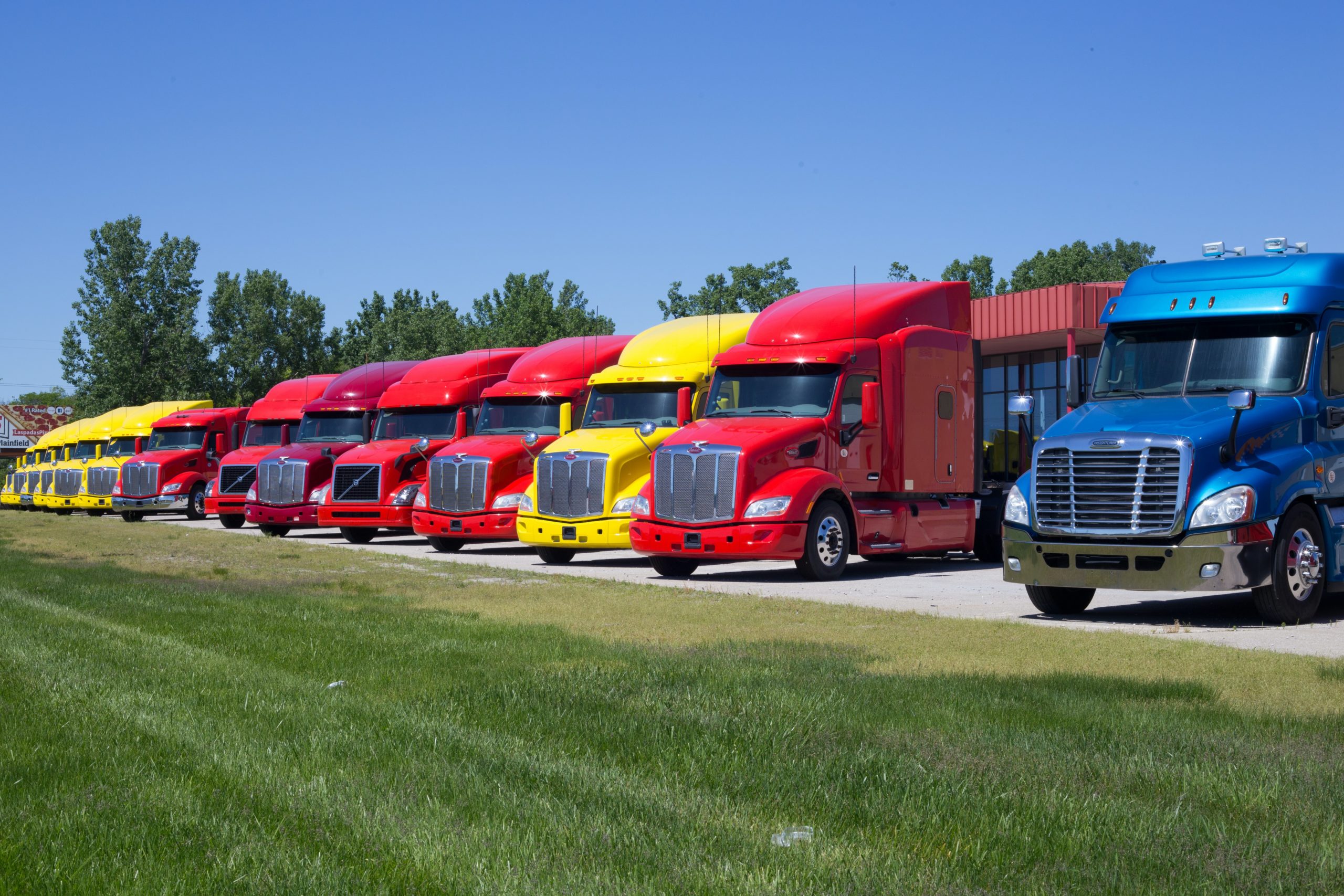Learn more about the rise of “trucking-as-a-service” technologies.
The United States economy depends on trucking. Each year over two-thirds of all freight shipped around the country arrives on a truck. Smaller businesses handle these big loads — something you might know if you’re a transport and logistics veteran.
The increase of smaller shippers has kept things competitive in the industry, but there’s a catch. Extreme fragmentation has caused logistical headaches for decades. Still, in recent years digital freight matching has helped ease these headaches.
Want to learn more about digital freight matching and why it should be on your radar? Keep reading.
A fragmented industry
There are over 700,000 companies operating trucking fleets in the U.S., and over 90% of these companies have fewer than 20 trucks on the road.
The largest carrier not named UPS or FedEx — XPO Logistics — is less than a third the size of the two big package-delivery services. Last year, only 35 other for-hire transport and logistics companies made over $1 billion in revenue. The trucking industry generates almost $800 billion in domestic revenue a year. It gives smaller shippers a lot of room to pick up jobs and move goods around the country.
Logistics and load boards
The largest transportation companies, like UPS and FedEx, often handle their own logistics. Their size and volume has led to innovative technological breakthroughs and analytical insights.
Smaller trucking companies don’t have access to the same technological resources. They depend on the support of the logistics industry. This helps match rigs and trailers to customers who need to transport larger volumes.
Until recently, logistics firms used freight boards to match carriers to on-demand customers.
In the old days, these were noticeboards on a logistics firm’s wall, with available carriers written down and shuffled around on a day-to-day basis. More recently, load boards have gone online. The largest of these services have helped spur the development of predictive freight-matching platforms.
How is digital freight matching different?
If you’re familiar with trucking, you might have noticed that “load board” and “digital freight matching” are sometimes used interchangeably. It can be a valid substitution, but it’s important to know what each term typically means. It helps explain why predictive freight-matching platforms are such a major breakthrough.
A modern load board is an online marketplace. Trucking companies (and independent truckers) can find and bid on jobs posted by prospective customers.
Sure sounds like you’re digitally matching freight to available carriers, doesn’t it?
The key difference between a load board and a predictive freight-matching platform is the element of prediction. A load board depends on truckers and customers finding each other. Digital freight matching streamlines the process and connects truckers and customers in real-time.
If transportation were more like eCommerce…
Here’s a useful real-world comparison: Think about the difference between eBay and Amazon. One is a successful multibillion-dollar business, and the other is Amazon. Tons of small businesses and entrepreneurial types use one or both platforms to sell their stuff. Amazon offers a level of convenience and product curation eBay rarely approaches.
Let’s say, for example, that you want a squirrel feeder for your backyard. You go and search both eBay and Amazon for “squirrel feeder.” Guess what you find?
On eBay, you get one column of results for over 1,700 items. The top results are handmade items, and a fair number of results are duplicates — in this case, a little squirrel-sized picnic table.
Amazon also has a neat little feature called “Frequently Bought Together.” It recommends related items that make your main purchase shine even brighter. Things like sacks of peanuts and wildlife food for your new squirrel feeder.
You could probably buy a sack of peanuts on eBay, but you’d need to deal with a different vendor with different shipping policies. There’s no Amazon Prime on there.
The difference between eBay and Amazon is like the difference between a modern online load board and a cutting-edge predictive freight-matching platform. Amazon makes the process easier.
Similarly, digital freight matching is known as the “easy button” for transport. Another common term is “Uber for freight.” If you’ve ever had to get a ride from an unusual place at an unusual time, you know how much easier it is to call an Uber than it would be to actually call a cab.
An easy button for shipping?
Digital freight matching attempts to streamline the process of finding jobs or carriers with artificial intelligence and other advanced technologies. The ideal outcome for a successful digital freight matching platform is a process with minimal human interaction.
The moment a customer decides they need something shipped, and the moment it arrives at its destination, should be as simple as possible. This means fewer clicks, and minimal manual searching for jobs or carriers. No human intermediaries serving as the middleman between customer and carrier.
It’s a great goal. Many on-demand shipments pass through as many as a dozen companies and even more middlemen on their way from pickup to drop-off.
Streamlining the shipping process by eliminating middlemen and paperwork is just the start. More ambitious predictive freight matching platforms aim higher. Several more successful platforms, including Convoy and Uber Freight, have fleets of trailers available for pre-loading. It allows truckers to simply drive up, hook up, and head off.
For easier pickups and drop-offs, digital freight matching platforms are also using yard management tools. They more accurately track the status and location of every trailer in the area. Instead of spending hours loading and unloading, they get more time on the road. That’s less time dealing with yard managers or warehouse supervisors and checking off paperwork.
In the end, these simplified processes ensure they have more time with their loved ones — and those managers and supervisors can have it a little easier, too.
Interested in utilizing digital freight matching for your transport and logistics business? We’d love to see if we can help. Get in touch with us today to find out more.






